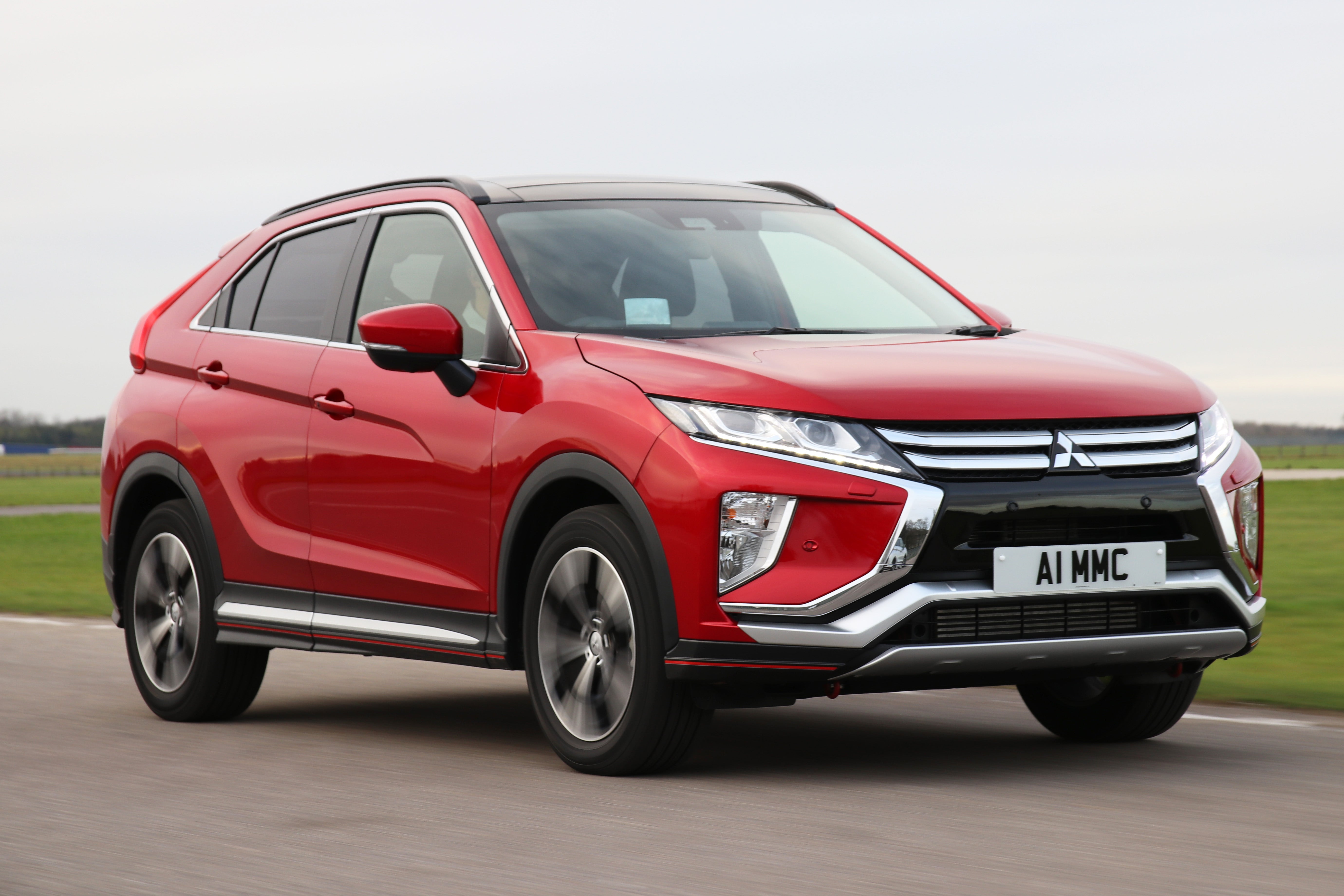Mitsubishi Eclipse Cross (2018-2021) Review
Written by Andrew Brady
Quick overview
Pros
- Four-wheel drive models were rugged
- Quiet on the motorway
- Apple CarPlay and Android Auto were standard
Cons
- The interior wasn't as spacious as the rivals
- There's only one engine
- CVT automatic gearbox dulled performance
Overall verdict on the Mitsubishi Eclipse Cross
"The Mitsubishi Eclipse Cross was a reasonably stylish SUV with a rugged edge that helped it stand out from numerous rivals including the Skoda Karoq, Volkswagen Tiguan, SEAT Ateca, Peugeot 3008 and Toyota CH-R. "
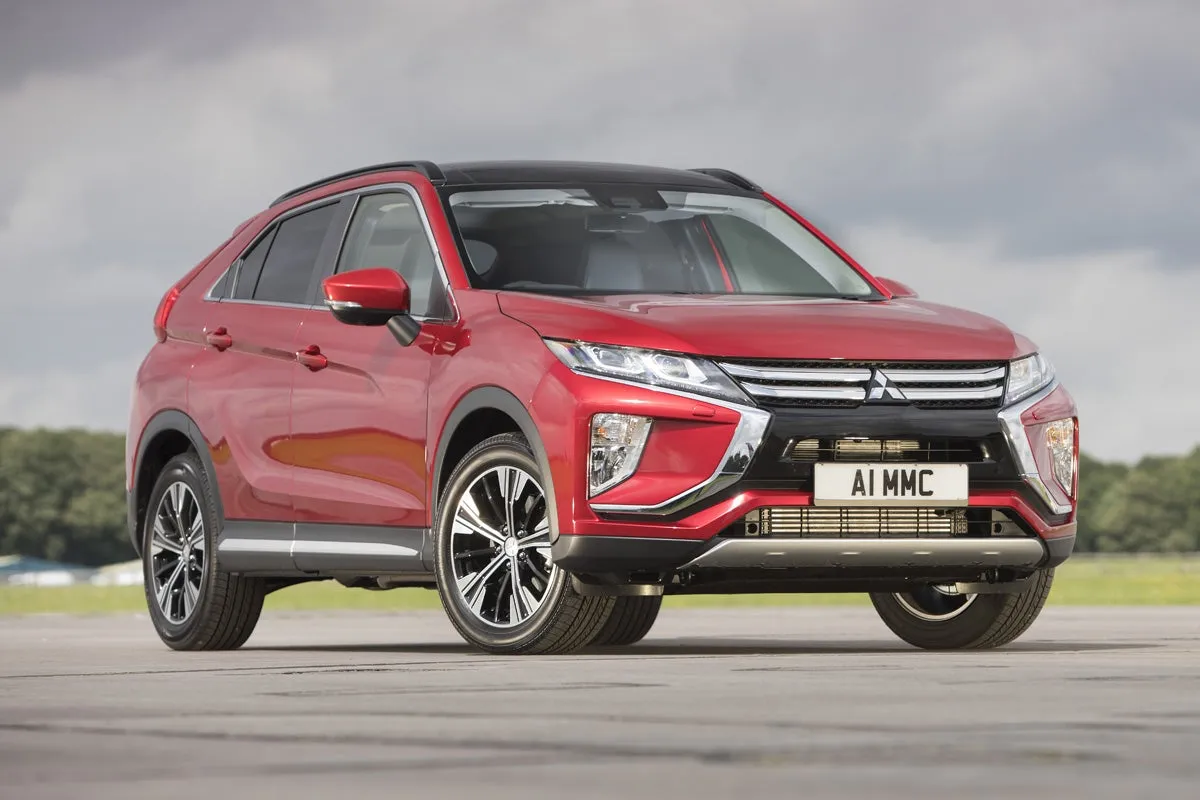
The competition was tough and one of the things that helped the Eclipse Cross stand out was its rugged nature. Fitted with the optional four-wheel-drive system, it would keep going when softer SUVs give up.
You were more likely to care about how the Mitsubishi drove on-road when buying one new, though, and in that respect, the news wasn't so positive. Sure, its 163PS 1.5-litre petrol engine was spritely enough, but it was relatively expensive to run and didn't feel all that quick if you opted for Mitsubishi’s CVT automatic gearbox.
That said, the Eclipse Cross was a fine cruiser. All models received cruise control which took the strain out of long motorway drives, the cabin was quiet and you got plenty of safety features as standard. High-end models were even better. They had active cruise control and an acoustic windscreen that cut down again on wind noise.
The Eclipse Cross didn't have the agility of its rivals in the bends, there was noticeable lean and its light steering didn't inspire confidence.
All models also had a reversing camera, making backing into parking spaces easy.
Mind you, it was worth going for the Dynamic model at launch. This added front and rear parking sensors, dual-zone climate control and keyless entry – very handy if you were a parent with their hands full.
Have kids? Practicality is likely to be a top priority for you. The Mitsubishi was a bit of a mixed bag on this front. It had loads of space up front, a versatile back seat and loads of interior storage, but its boot was so-so. Its capacity was average and with the rear seats slid back as far they’ll go, it was smaller than you’d find in most family hatchbacks of the same era.
It also fell short on interior design. It looked okay, but it lacked the panache you’d find in the Peugeot 3008 or the consistently solid build quality offered by the Skoda Karoq. Those cars also had larger and clearer infotainment screens, although the Mitsubishi did have Apple CarPlay and Android Auto as standard.
So where does that leave us? The Mitsubishi had its work cut out against a long list of accomplished rivals. They had sophisticated four-wheel-drive, meaning it's worth considering if you’re looking for a used family SUV with genuine off-road credentials.
heycar has 1000s of used cars for sale, including a wide range of Mitsubishi Eclipse Cross cars for sale.
Is the Mitsubishi Eclipse Cross right for you?
The Mitsubishi Eclipse Cross was the car for you if you wanted an easy-to-drive SUV that didn't cost a fortune to run, yet could roll up its sleeves and deal with serious off-roading if needed.
That said, it was far less utilitarian than the Mitsubishi Shogun Sport. Inside, the cabin looked reasonably stylish, a sensibly specified infotainment system came as standard and your passengers got a reasonable amount of space. Only the small boot let it down.
It’s not so much that the Eclipse Cross wasn't a good car, but its weaknesses were readily exposed by the quality of the competition it was up against.
What's the best Mitsubishi Eclipse Cross model/engine to choose?
The Mitsubishi’s Dynamic trim level is still the one we’d go for. Its front and rear parking sensors made it even easier to park than the standard car, its wing mirrors folded away and you also received luxuries such as dual-zone climate control and keyless entry.
Choosing an engine was, and still is, easy. There was only one available: a 163hp 1.5-litre petrol. It was reasonably smooth and quiet when launched but was no fuel sipper. If you’re only going to drive on-road, we’d stick with a manual model with two-wheel drive. Need extra grip? Then you’ll want the four-wheel drive version with the automatic gearbox.
What other cars are similar to the Mitsubishi Eclipse Cross?
There were many. One of its biggest problems is that it had numerous rivals.
The Skoda Karoq felt better built inside and had noticeably more interior space. On the other hand, the Peugeot 3008 was truly desirable with smart looks and a space-age interior. If a sportier drive was a priority, the SEAT Ateca was decent. Fuel efficiency? The Toyota’s C-HR was king.
Mitsubishi still makes the Eclipse Cross, but not for the UK. The brand stopped selling cars entirely to the UK market in 2020. However, the new Volkswagen Tiguan and Skoda Karoq are modern alternatives.
Comfort and design: Mitsubishi Eclipse Cross interior
"If you were used to Mitsubishis of old – or had even driven the Shogun Sport – you might not have had high hopes for the interior quality of the Mitsubishi Eclipse Cross."
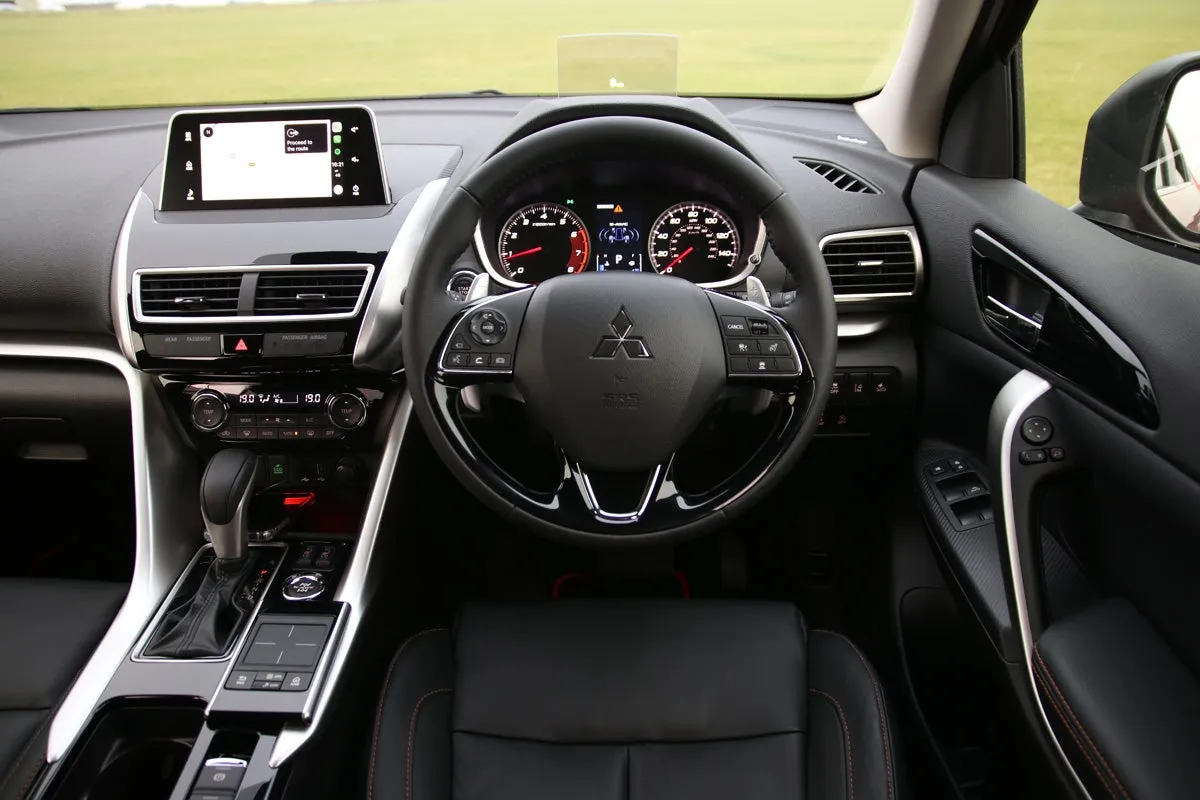
There was little utilitarian feel, something you got from the company’s other SUVs – you could even say there was a genuine attempt to make it look stylish. The centre console was neatly sculpted with the middle portion of the dashboard jutting out above the ventilation controls below.
It felt very driver-centric with the infotainment screen atop the dashboard; you never had to take your eyes off the road for more than a split second.
The rows of buttons looked a little untidy, but the controls were easy to find – the ventilation system’s large knobs were instinctive to feel for and you could turn up the stereo using buttons on the steering wheel.
Getting comfortable behind the wheel never caused problems. You got plenty of adjustment from the driver’s seat and the leather-trimmed steering wheel. A tall transmission tunnel ran between the driver and the front-seat passenger meaning the gear knob was easy to reach.
Range-topping Exceed models also received eight-way electrically adjustable seats.
Unfortunately, while this added to the brand's vast improvement, other cars did better. The Skoda Karoq had better quality components and was more intuitive to use and the Peugeot 3008’s cabin was simply nicer.
Quality and finish
Many of the hard plastics in the Shogun Sport made way for soft and spongy materials that felt expensive. Cheap plastics could still be found on the door tops and instrument binnacle.
Faux metal plastics framed the instruments behind the steering wheel, flowing from the centre console to the passenger side of the dashboard. This broke up the vast swathe of plastic.
Regardless, the Eclipse still felt dark and dingy and even moving up the model range didn't allow colour injection. Those looking for a young vibrant SUV were better looking elsewhere.
That wasn't to say there was no reason to upgrade from the basic Verve model. Going for the Dynamic version of the Eclipse Cross brought Mitsubishi’s ‘high grade’ fabric seats with silver stitching and chrome interior door handles, while its LED interior lighting gave brighter white lights rather than the dull yellow emitted by the old-school filament bulbs.
The range-topping Exceed trim received a full leather interior with orange stitching and twin glass sunroofs.
Infotainment: Touchscreen, USB, sat-nav and stereo in the Mitsubishi Eclipse Cross
The Mitsubishi Eclipse Cross’ infotainment system did the job rather than wowing you with technical excellence.
Its seven-inch display was smaller than you’d find in rivals – even a basic Skoda Karoq had an 8-inch screen that could be upgraded to a 9.2-inch system.
In the Mitsubishi, you could, unfortunately, also forget about getting a digital instrument binnacle like the one fitted as standard to the Peugeot 3008.
That said, it did get the fundamentals right. The screen was atop the dash; it was easy to glance at when driving.
Okay, so the menus weren't logically laid out and no model received factory-fit sat-nav but that unlikely mattered. Why? Because Android Auto and Apple CarPlay were fitted as standard, you could skip the misery of the Eclipse’s menus by using the more intuitive layout from your mirrored smartphone.
Doing this meant you also got live services offered by high-end sat-nav systems – so you could route around congested traffic and find parking spaces near your destination.
It also meant you could play iTunes or Spotify on the car’s six-speaker stereo. If you needed more punch, upgrading to the Exceed model brought a nine-speaker Rockford Fosgate system.
Space and practicality: Mitsubishi Eclipse Cross boot space
There was no shortage of room in the Eclipse Cross for two adults sitting up front. The large transmission tunnel running between the front seats meant you wouldn't bang elbows with your front passenger and, even with the glass sunroofs, there was still loads of headroom.
The back seat was more of a mixed bag. The Cross’ sloping rear end ate into headroom so tall rear-seat passengers would've found their hair skimming the roof lining. That said, the floor was flat meaning there was plenty of space for feet.
As well as reclining, the Mitsubishi’s back seat also slid back on runners so passengers could sit back and stretch out on longer journeys.
Doing this, however, meant the Mitsubishi’s relatively small boot got even tinier – shrinking from 448 to 341 litres, less than you would've found in a family hatchback such as the Volkswagen Golf. It was also miles off the 520 litres a Skoda Karoq offered and left plenty of room for adult rear-seat passengers.
It wasn't all bad for the Mitsubishi, though, the boot lid left a big opening to aim your luggage through, there was a small lip to lift it over and, with the rear seats folded away, you got a flat, if slightly sloping boot floor.
Child seats were also easier to fit. The back seats slid back as far as they could go, leaving plenty of room for a child seat. The Isofix points were marked, and the car didn't have the losable plastic covers fitted to others of the same era.
Interior storage was also excellent with the Mitsubishi offering a large glovebox, front door bins, and a huge storage bin under the front centre armrest. Dynamic and Exceed were the only two versions that had a rear armrest.
Handling and ride quality: What is the Mitsubishi Eclipse Cross like to drive?
"Go for a four-wheel-drive Eclipse (available on Dynamic and Exceed models) and you’ll get one of those rare things in life these days – an offroader that can go offroad. "
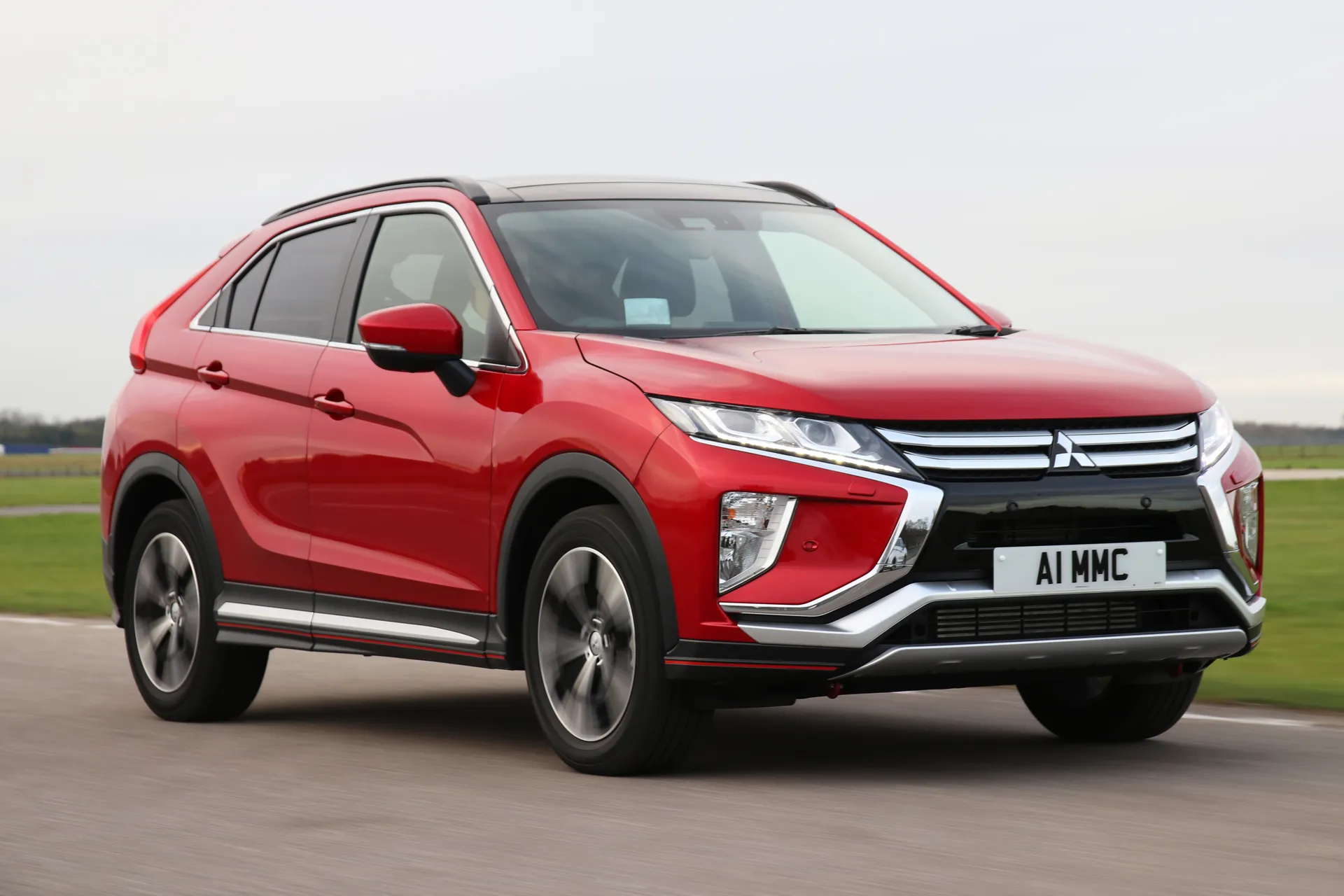
Called Super All Wheel Control or S-AWC for short, the Mitsubishi’s four-wheel-drive system could send power to whichever wheel had the most grip – and up to 60% of it to the rear wheels.
It handled snow and slush with ease, but also rough tracks that left rivals stranded, and the drive select Auto, Snow and Gravel settings made it easy – you chose the terrain you were tackling and let the car do the rest.
That said, if you’re considering this as a family car that can also work for a living, it’s worth noting that the Eclipse’s 1,600kg towing capacity is 500kg less than a four-wheel-drive, same-era diesel Skoda Karoq could manage. Unfortunately, the Eclipse didn't make such a good account of itself on the road.
Sure, it travelled quietly on the motorway once you were up to speed. You also got cruise control as standard, so you didn't have to modulate your foot on the accelerator for hours on end, and four-wheel-drive models felt planted to the road.
In town, though, the ride was firm, sniffing out bumps and surface changes like a veteran Bloodhound hunting its quarry. Verve models were the comfiest, coming with 16-inch alloy wheels two inches smaller than those on every other model.
At least the Mitsubishi’s only engine – a 1.5-litre four-cylinder petrol – offered decent performance at slower speeds, and the car was easy to park because you got a reversing camera as standard.
The Dynamic models added front and rear parking sensors, while the top-banana Exceed cars had a 360-degree view camera. That said, a full auto-park system – something available with the Skoda Karoq – wasn't even an option on the Mitsubishi.
Spreading your wings to country roads would see you roll and pitch more like a seagull than an eagle. It sounds nice, but that's not really what you want while tackling bends. Still, this is an off-roader, not a hot hatch.
It was not terrible by any means, but a SEAT Ateca felt more nimble, and the Mitsubishi’s lifeless steering – which dampened snatchy wheel movements when you were off-roading – didn't inspire confidence when aiming for a corner.
What engines are gearboxes are available in the Mitsubishi Eclipse Cross?
As previously mentioned, only one engine existed – a 163PS 1.5-litre four-cylinder petrol.
It was decent, getting you from 0-62mph in 9.7 seconds while sounding quiet. It had enough pace to keep up with town traffic and had no issues getting up to faster speeds when joining the motorway.
The six-speed manual gearbox wasn't so good. It could feel resistant as you moved through the gears and the snatchy clutch pedal made it tricky to drive smoothly at slower speeds.
There was an automatic option – a CVT – on all but Verve models – but with it fitted, the car was half a second slower to 62mph and, if anything, the performance felt duller than that. Go for an overtake and it held the engine at a constant speed, leading to a monotonous drone could've done without.
Unfortunately, four-wheel drive only came with the automatic gearbox.
Refinement and noise levels
The Mitsubishi Eclipse Cross travelled quietly on the motorway once up to speed, with limited road noise or wind whistle. The latter was particularly well suppressed in Dynamic versions and above which had an acoustic windscreen.
Cruise control, meanwhile, was standard so you didn't need to modulate your foot on the accelerator for hours on end on long journeys.
At those sorts of speeds, the Mitsubishi’s engine noise faded into the background but when accelerating to a cruise, its purposeful tone turned harsh.
Safety equipment: How safe is the Mitsubishi Eclipse Cross?
The Mitsubishi Eclipse Cross got a five-star crash rating when it was evaluated by the safety body Euro NCAP in 2017.
A whole host of safety kit came as standard. All models got seven airbags, automatic emergency brakes that worked at speeds of up to 50mph, a lane departure warning system and a warning buzzer that sounded if you had a flat tyre.
All models also got Active Yaw control on the front wheels, so the car remained easy to control even when steaming into a corner carrying too much speed.
If you wanted more safety kit then you’d have opted for the Exceed model, unfortunately, you couldn't add safety packs without spending big on the top-of-the-range car. Exceed trim added active cruise control, which as well as holding you at a set cruising speed like the standard system, could also accelerate and brake, keeping a safe distance from the traffic in front.
You also received lane change assist, so if pulled out in front of hidden blind spot traffic on the motorway, it sounded a buzzer and showed a warning on the corresponding wing mirror. A somewhat common feature now.
MPG fuel costs: What does a Mitsubishi Eclipse Cross cost to run?
"The Mitsubishi may have only been available with one engine, but fuel economy varied depending on wheel size, and whether or not you went for the automatic gearbox or four-wheel drive, which added the auto as standard."
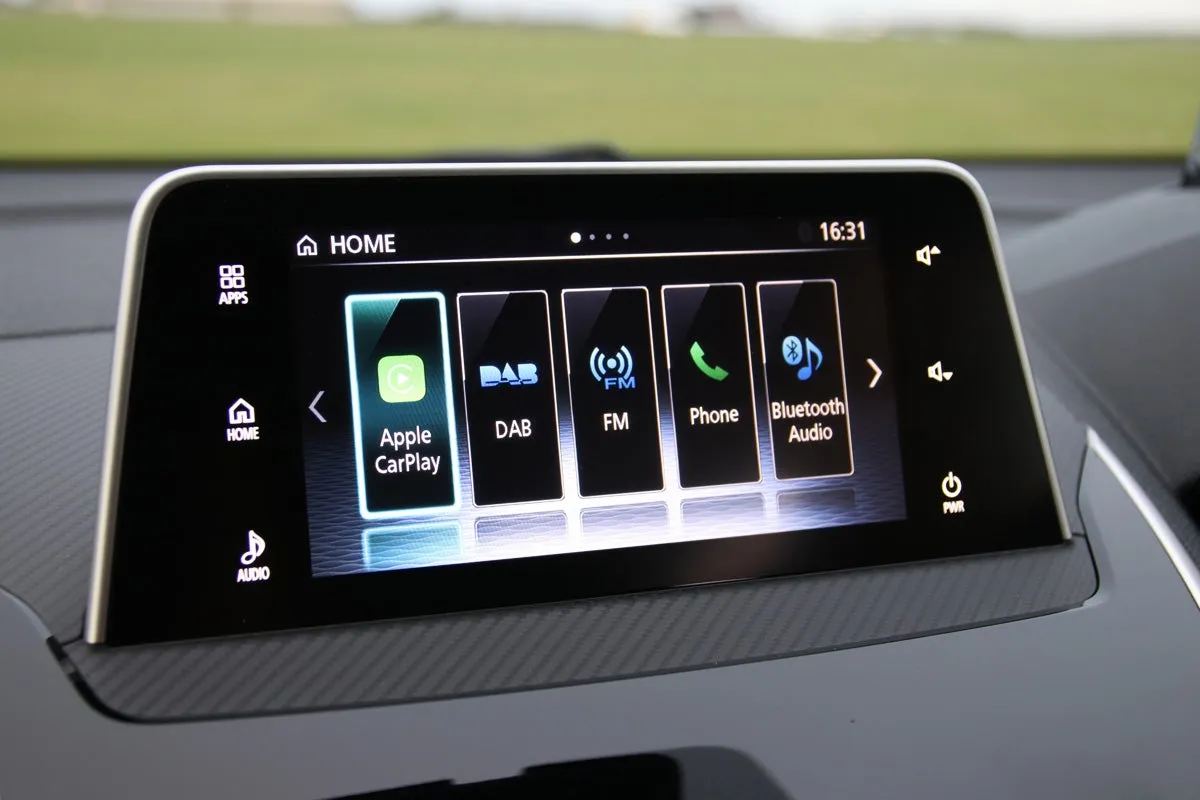
A basic Verve version with 16-inch wheels, two-wheel drive and a manual gearbox did just under 40mpg officially, an Exceed model with 18-inch wheels, an auto 'box and four-wheel drive couldn't manage much better than 30mpg.
By comparison, Skoda reckoned a same-era 150PS petrol Karoq with four-wheel drive and an automatic gearbox would've been good for more than 40mpg, while the diesel model got more than 60mpg, officially.
The fuel-sipping petrol alternative to the Mitsubishi was the Toyota CH-R. 115PS petrol models achieved more than 45mpg and Toyota claimed the petrol-electric hybrid got nearly 75mpg. It's worth checking some real-world figures, but we think Toyota aren't too far off.
Mitsubishi Eclipse Cross reliability and warranty
Mitsubishi offered a five-year warranty, meaning later cars should still have a year or so left. It doesn't currently rank in any bad or good lists, but Mitsubishi is third from the bottom in the latest HonestJohn.co.uk index.
The Eclipse Cross made a few 'most reliable family SUV' lists and some owners reported that no cars (up to five years old) had any issues.
Mitsubishi Eclipse Cross insurance groups and costs
The Mitsubishi Eclipse Cross won’t cost a fortune to insure. Basic Verve cars sit in group 18 (out of 50) while First Edition cars start in 20. The range-topping Exceed is group 19 for the manual and 20 for the auto, a running theme across the range.
VED car tax: What is the annual road tax on a Mitsubishi Eclipse Cross?
Unfortunately, you won't save much on tax as all cars emit a fair amount of C02. The entry-level Verve emits between 154-170g/km, meaning it'll cost you £680 for the first year before defaulting to £190 thereafter.
Things are much the same across the range, but the most expensive is the Dynamic 4WD auto (registered between 1 April 2020 and 31 Aug 2021). These emit nearly 200g/km of c02 and as a result, you'll be £1,650 lighter after the first year.
Mitsubishi Eclipse Cross price
"The Mitsubishi Eclipse Cross was priced from £22,545 for a basic Verve model, rising to £30,550 for an automatic Exceed with four-wheel drive when new. "
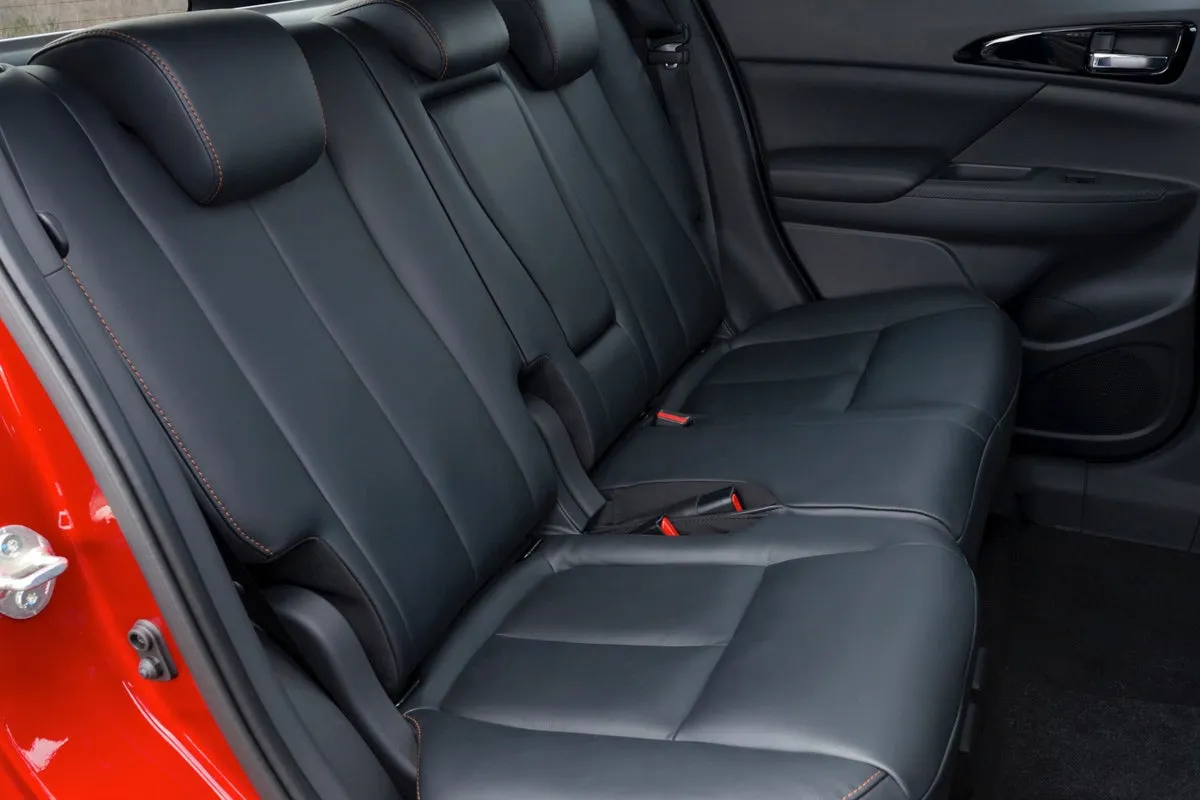
Early cars still hold value and start from around £7,800. This gets you a sub-100,000-mile car. On the other hand, 2021 cars range between £17,000-£20,000. There are many 14,000-mile examples and some even have under 8,000 miles.
Trim levels and standard equipment
Basic versions received climate control, auto lights and wipers, cruise control and tinted rear windows. They also had a seven-inch infotainment screen with Apple CarPlay, Android Auto and a rearview camera.
Design SE cars represented a styling pack rather than a standalone model. They got 18-inch wheels, which didn't look as lost in their arches as the 16-inch versions fitted to the basic car. Design SEs were limited to three colour choices: Frost White, Atlantic Grey and Lightning Blue. All were available across the range.
Levelling up to Dynamic meant more kit. These received an auto-dimming rearview mirror to cut out dazzle, dual-zone climate control, wing mirrors that folded away, front and rear parking sensors, a head-up display, heated front seats and keyless entry.
Likewise, these also received extra flashes of chrome on the grille and below the doors, making them look a little more premium.
And finally, the Exceed. Twin glass sunroofs let in ample light, there was an uprated stereo, a full leather interior and active cruise control.
Ask the heycar experts: common questions
Is the Mitsubishi Eclipse Cross a sports car?
How good is the Mitsubishi Eclipse Cross off road?
Do Mitsubishi still make the Eclipse Cross?
Get our latest advice, news and offers
Keep me updated by email with the latest advice, news and offers from heycar.
By submitting you agree to our privacy policy
